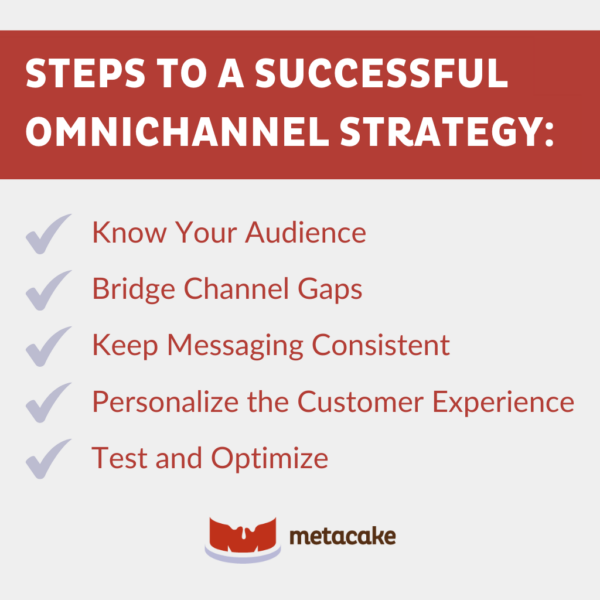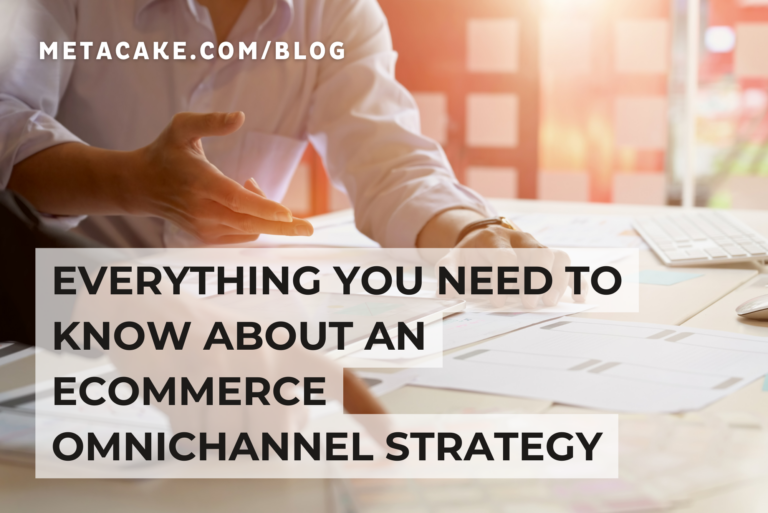Today’s ecommerce business owners are aware that technology is fully integrated into every aspect of their business.
More consumers are distributing their shopping between online stores and physical ones. Because of this, having an ecommerce omnichannel strategy is not only important but essential.
So, what’s an omnichannel strategy? Let’s first take a look at what it’s not.
A non-omnichannel strategy doesn’t integrate multiple channels for a seamless customer experience. In this type of approach, each marketing channel would have its own strategy, its own messaging, and its own campaigns.
How much more effective would your marketing efforts be if all your channels were working seamlessly together, reinforcing your unifying brand message and promoting your key campaigns?
Now, let’s dive into what an omnichannel strategy is and how to use it.
What Is an Ecommerce Omnichannel Strategy?
An omnichannel marketing strategy is a customer-centric approach to driving interaction across numerous channels using seamless, customized messages.
This approach includes both online and offline channels, such as social media, email, text messaging, and websites, as well as physical stores and in-person events, all with a uniform customer experience and branding.
Consumers have more and more choices today on how they can interact with businesses. In all likelihood, potential customers will interact with your brand multiple times before they ultimately decide to click through to your website, so it’s essential that your messages are consistent throughout each of your acquisition channels.
Successful omnichannel marketing guides the customer from touchpoint to touchpoint without encountering any obstacles. If done correctly, businesses can secure purchases and increase sales. If done incorrectly, businesses can lose customers.
Benefits of an Omnichannel Strategy
Omnichannel marketing focuses on the customer over the channel or platform, allowing customers to engage with brands at their own pace and on their own terms. This improves the whole customer experience, leading to several measurable benefits:
- Improved Engagement
- Higher Purchase Rate and Greater Spend
- Greater Customer Loyalty
- Seamless Brand Identity
- Better Data
As ecommerce business owners, we no longer have the upper hand when it comes to sales. Customers have nearly limitless options, so we must meet them where they want to be, whether on social media, in-store, or anywhere else on the customer journey.
Customers increasingly have the ability to conduct their own research on businesses. These customers feel empowered by using online platforms to make informed buying decisions. It’s up to ecommerce business owners to deliver consistent, trustworthy brand experiences across all channels.

Implementing an Omnichannel Strategy
Creating a successful omnichannel strategy can be a challenging endeavor, but breaking it down into individual stages can make it much more feasible.
Let’s take a look at some of these steps:
Know Your Audience
Use data analytics to gain insights into demographics, preferences, and behaviors.
Knowing and understanding your audience’s interests, needs, and preferences allows you to create content that addresses their issues, answers their questions, and offers solutions to their problems.
Bridge Channel Gaps
Ensure seamless transitions between channels, like integrating social media with your website for direct purchases. Ensure a frictionless customer journey across all touchpoints.
Keep Messaging Consistent
Maintain a strong, consistent brand voice across all platforms.
Whatever marketing message drew a visitor to your site, whether that be a special offer or free shipping, it’s important for that same message to be clearly featured when a visitor lands on your site.
It’s called “maintaining scent.”
Personalize the Customer Experience
Segment your audience and tailor content to individual needs. Personalization has become so important that businesses cannot afford to ignore it.
According to Epsilon research, 80% of consumers are more likely to make a purchase when brands offer personalized experiences.
Test and Optimize
Use data to continuously improve your strategy, focusing on metrics like conversion rate, retention rate, and customer lifetime value.
Optimizely is our testing and optimization platform of choice. Go ahead and check out their A/B testing.
Final Thoughts
Have you ever seen an amazing Google search ad — one that seems to solve the exact problem you’re having — only to land on the company’s website and have it fall completely flat? Did you think you clicked on the wrong ad?
We’ve seen this time and time again. And this kind of fragmented experience seriously damages your brand and hurts your bottom line.
So, take it from us and approach your marketing from an omnichannel perspective. With a well-executed omnichannel strategy, you can enhance customer engagement, foster brand loyalty, and ultimately drive business growth.
Need help implementing these ecommerce omnichannel strategies? We’re always here to help. Reach out today!
